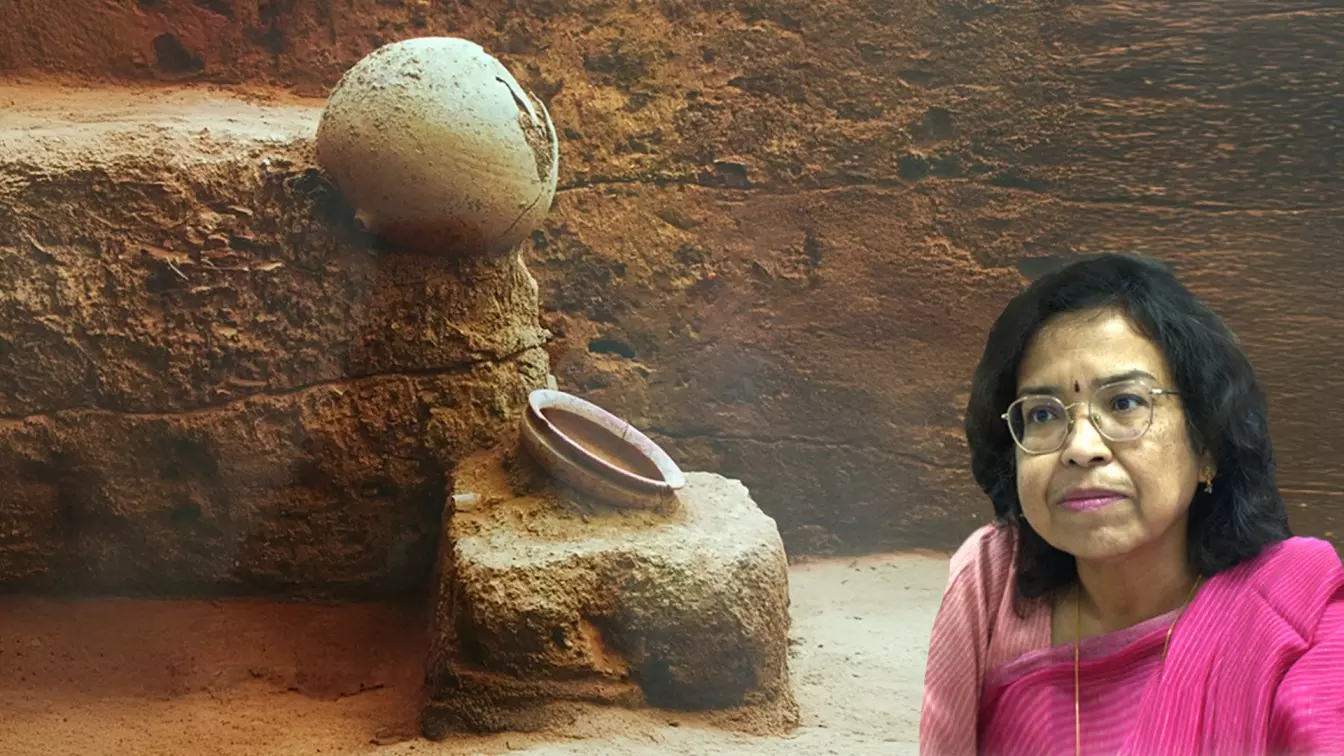
What’s delaying Keeladi report? ASI spokesperson responds to allegations
Sahu talks about archaeologist Amarnath Ramakrishna's refusal to revise findings, report delays, and perception that ASI is prioritising Saraswati over Keeladi

Amid ongoing debates over the delayed publication of Keeladi excavation reports and allegations of institutional suppression, The Federal spoke to Nandini Bhattacharya Sahu, official spokesperson of the Archaeological Survey of India (ASI).
In a candid conversation, Sahu addressed concerns around the delayed excavation reports, rebutted allegations of bias, and clarified ASI’s scientific standards and protocol.
Why is ASI moving forward with the third phase Keeladi excavation report when the first two phase reports remain unpublished? What’s the urgency?
ASI is not publishing it on its own initiative. The excavator of the third phase sought permission to write the Keeladi excavation report, along with the Kodumanal report, which he excavated in 2018. He had excavated Keeladi in 2017-18. It's standard protocol — any officer who excavates a site is required to submit a report. That’s all that’s happening here.
Amarnath Ramakrishna has reportedly said the corrections suggested to his report were invalid, and that accepting them would compromise scientific integrity. Has he communicated anything to the ASI officially?
No. As of now, nothing has been communicated by him to the Director General of ASI. At least, not that I know of.
Is ASI punishing Amarnath Ramakrishna for the scientific findings he made at Keeladi?
Absolutely not. All excavations and explorations, including those by Ramakrishna — who explored nearby areas and excavated at Keeladi — are fully financed by the Director General of ASI. Every expense is funded by the institution. There’s no question of targeting anyone.
But the delay in publishing the report — months and years — is being viewed as institutional punishment. How do you respond to that?
That’s not the case. We simply do not publish any excavation report unless it has been thoroughly vetted by experts. This applies not just to Keeladi, but to every site in India. We may be delayed, but we want everything published by ASI to be authenticated, validated, and error-free. We carry a reputation built over the years, and we’re committed to maintaining that standard.
What kind of scientific evidence does ASI have to counter the findings made by Amarnath Ramakrishna?
There is no countering or contesting. Ramakrishna is an ASI employee — an esteemed colleague, in fact. We even work together in the same section. He has made claims in his report that need to be corroborated. Like in any scientific submission, when superiors suggest certain gaps be addressed, it’s only natural to ask for revisions before final submission. That’s all that has happened.
Do you think archaeological survey reports have become politicized recently, especially in light of criticism from Tamil Nadu?
Criticism is a right everyone has. People can have different opinions. ASI follows a specific framework for writing excavation reports under the Memoirs of the Archaeological Survey of India. We stick to that format and ensure excavators meet those requirements. Once we’re satisfied that the report is scientifically valid and meaningful, we proceed.
After the Tamil Nadu government resumed excavations in Keeladi, fresh evidence was reported. Does ASI recognise the scientific merit of these findings?
We cannot comment on that yet. Nothing has been officially submitted to the ASI. Only if something is submitted to the Director General of ASI can a formal view be taken—whether to accept or reject it. The Tamil Nadu State Government is conducting its own independent work and has full control over its process, including the scientific analysis.
There is a perception that the Saraswati excavation is being prioritized while Keeladi has been sidelined. Is ASI favouring one over the other?
Not at all. Just like Keeladi continued for two seasons, the Bahej excavation, related to the Saraswati project, is ongoing. It has just concluded for this year due to the onset of rains. Every site is treated independently based on its own excavation cycle and findings.
Sriraman, the excavator of the third phase, initially said there was no significant finding. Why does ASI want to publish that report then?
ASI is not initiating the publication. Sriraman sought permission to write the reports on Keeladi and another site. Once he is ready and submits them, the same process of review and validation will follow before any publication. Also, each excavator has the right to report on the specific section they worked on. When Sriraman excavated a particular trench, his assessment applied to that segment—not the entire Keeladi site.
So ASI didn’t ask Sriraman to file the report—he initiated it?
Exactly. When ASI grants permission for excavation, it comes with the requirement that the excavator must complete and submit a report. This is a written condition in the license. Take Rakhigarhi, for example—it's been excavated multiple times by different teams. Each has submitted or is in the process of submitting reports based on their findings. It’s not limited to the first excavator alone.
(The content above has been transcribed from video using a fine-tuned AI model. To ensure accuracy, quality, and editorial integrity, we employ a Human-In-The-Loop (HITL) process. While AI assists in creating the initial draft, our experienced editorial team carefully reviews, edits, and refines the content before publication. At The Federal, we combine the efficiency of AI with the expertise of human editors to deliver reliable and insightful journalism.)

